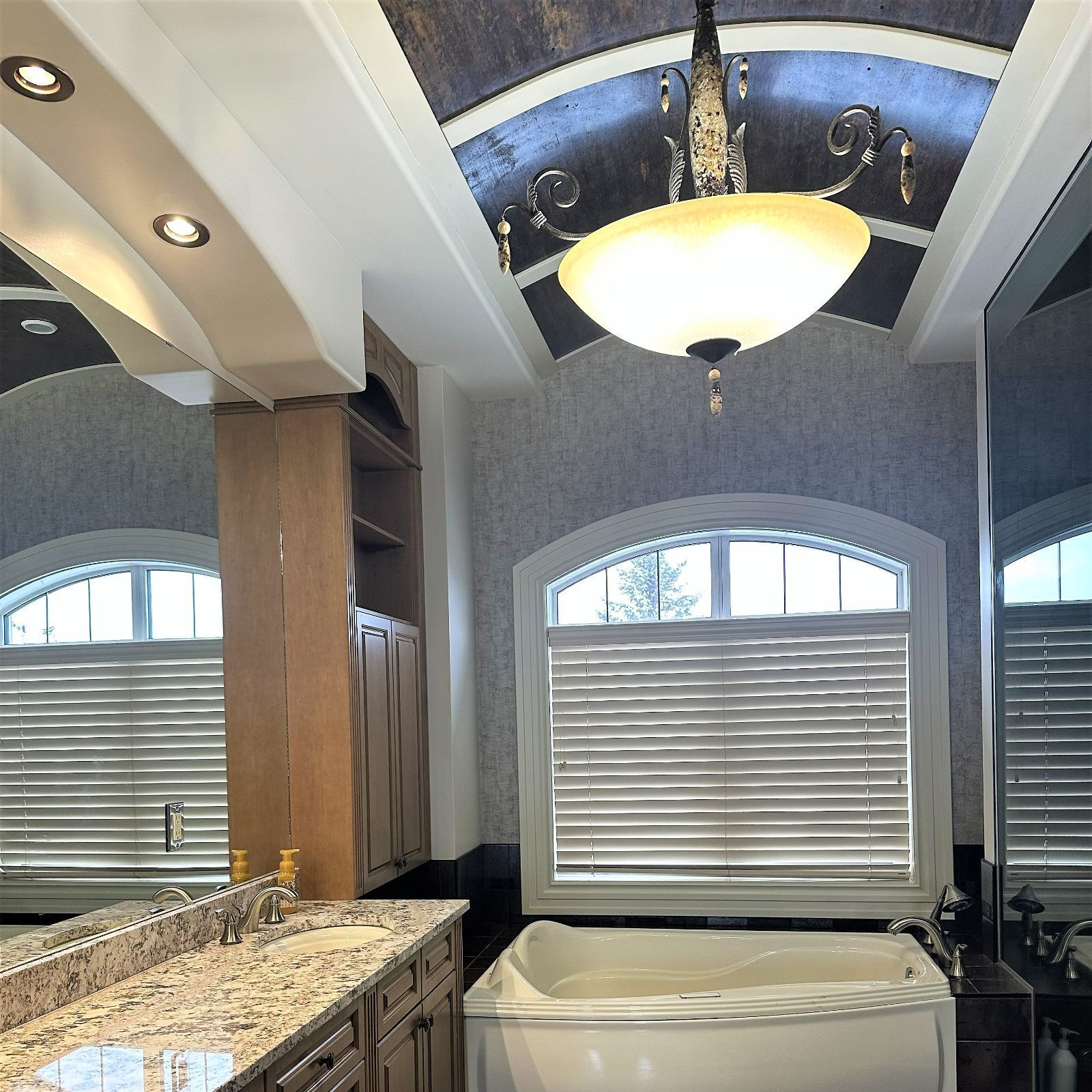Why Fall Is Actually The Best Time To Paint Indoors
Most homeowners don't realize that fall is the best time to paint indoors. Spring and summer get all the attention for home projects, but our experience shows early fall provides the best indoor painting conditions. The temperature stays between 15-21°C with stable humidity levels that allow paint to stick better and dry properly.
Professional painters in Saskatoon recommend fall to paint indoors, and with good reason too. Your home's humidity levels reach their sweet spot during this season. Paint tends to dry unevenly in high humidity, which substantially shortens its lifespan. The timing works out perfectly too - a fresh paint job in September means your space looks amazing for holiday visitors. Modern low-VOC paints and indoor climate control make painting practical and effective from November through May. This piece explains why fall creates the best painting conditions in Saskatoon and helps you make the most of this prime painting season.
Why Fall Weather Creates the Best Indoor Painting Conditions
Professional painters know that fall's magic touch creates the perfect conditions for painting. The sweet spot for interior painting sits between 50-85°F (10-30°C), with 67°F (20°C) being ideal. Saskatoon's fall weather naturally brings our homes to this perfect range without extra heating or cooling.
Fall's most important advantage comes from better humidity control. The season brings lower humidity levels than summer's muggy weather. Paint needs 30-50% humidity to stick properly and dry evenly on surfaces.
Summer's excess moisture makes paint dry unevenly and leads to streaking and poor adhesion, which shortens its lifespan. Fall's drier air will give a smooth, professional finish that homeowners want because each coat cures correctly.
The season's cooler temperatures bring practical benefits. You can keep your windows open during painting and get good ventilation without extreme temperatures affecting the paint job.
Saskatoon's fall weather hits that sweet spot perfectly. The temperature stays cool enough to prevent quick drying that causes brush marks, yet remains warm and stable for proper adhesion. Fall proves to be the best time to paint indoors.
Fall is the Smartest Time to Refresh Your Home
The end of summer activities signals a hidden advantage - autumn is the perfect season for interior refreshes and renovations. Fall brings easier scheduling with professional painters compared to the packed summer months. You'll likely get better attention to your project and possibly better prices as work slows down naturally.
The start of school year brings back regular family schedules, which makes September an excellent time to tackle home improvements. This creates a perfect window with fewer interruptions and time to plan your space thoughtfully.
Getting your home ready before winter makes practical sense. Early fall painting ensures your space looks great for holiday gatherings. Your newly painted rooms will be completely dry and fresh-smelling well before Thanksgiving or Christmas celebrations begin.
Fall renovations bring unexpected benefits. The cooling temperatures make home upgrades valuable for comfort. A fresh coat of paint helps your home's energy efficiency by reflecting natural light better during shorter winter days.
Autumn sits perfectly between summer's busy pace and winter's slowdown. This makes it the best time of year to paint your Saskatoon home's interior.
Why Painters Recommend Fall for Interior Projects in Saskatoon
Professional painters in Saskatoon know our prairie climate's unique challenges inside out. Saskatchewan's weather patterns have taught us that perfect timing of interior painting projects makes a huge difference in the final results for homeowners.
Our experience as local painting professionals shows that fall projects book up quickly, and with good reason too. Saskatoon's autumn brings naturally lower humidity levels that let paint dry faster and more evenly. The results are flawless finishes that summer's humid conditions just can't match.
Temperature stability is another vital factor. Paint works best when room temperatures stay between 15°C to 25°C (59°F to 77°F). Fall weather naturally provides this sweet spot without much need for heating or cooling.
Most people don't know that fall kicks off our "off-peak" season. This timing works in your favor twice over. Professional painters have wrapped up their summer exterior work, so scheduling becomes more flexible. Plus, many painting companies adjust their rates competitively during these quieter months.
Every Saskatoon house painter puts indoor air quality first. Proper ventilation during interior prep becomes even more essential as windows stay shut longer. Modern low-VOC paints have made fall and winter painting safer and more practical than ever.
Revive Painting and Wallpaper delivers the best interior finish. We're Saskatoon painting contractors who time our projects perfectly to ensure optimal conditions throughout the painting process.
Matching the Right Colours
Fall's optimal painting conditions make your paint color choices even more crucial. The season creates perfect painting weather and draws inspiration from its natural palette of warm, rich hues that make indoor spaces feel cozy.
Benjamin Moore's fall color palette showcases seven versatile options that capture the season's warmth and look great all year round. The palette includes the rich grayish-brown Bear Creek, reddish-brown Sequoia, and earthy Metallic Gold with its rusty undertones. Designers love Cloud Cover, a softly-shaded white option that adds sophistication to any space.
Your Saskatoon home's color scheme should flow smoothly between rooms. A smart way to achieve this is to pick a main neutral for connected spaces and add complementary colors in separate rooms. Paint sample boards instead of walls directly to see how colors look in different light throughout the day.
Our experience shows that fall foliage-inspired colors create the sophisticated, grounded feeling homeowners want. Sage greens, warm beiges, and rich browns bring nature's comfort inside, making spaces feel both elegant and welcoming. Keep in mind that your chosen palette should blend the season's inspiration with your personal style to create a refreshed and harmonious home.
Key Takeaways
Fall emerges as the optimal season for interior painting projects, offering ideal environmental conditions and practical advantages that professional painters consistently recommend for superior results.
• Fall provides perfect painting conditions with temperatures between 15-21°C and humidity levels of 30-50%, ensuring optimal paint adhesion and even drying.
• Lower humidity in autumn prevents paint defects like streaking and poor adhesion that commonly occur during summer's muggy conditions.
• September timing maximizes convenience as contractors have more availability, children return to school, and your refreshed space is ready for holiday entertaining.
• Professional painters offer competitive fall rates during their off-peak season while providing better project focus and scheduling flexibility.
• Autumn's natural color palette inspires warm, sophisticated interiors with earthy tones like sage greens, warm beiges, and rich browns creating cozy year-round appeal.
By choosing fall for your interior painting project, you'll benefit from both superior technical conditions and practical timing that ensures professional-quality results at potentially lower costs. Contact us today to get started!


